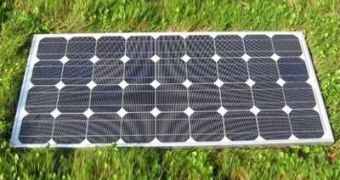While some people are trying to use spinach as a means to make solar cells more efficient, others have decided to approach the matter in hand in a somewhat different manner.
Thus, Bandgap Engineering (i.e. a company from Massachusetts that is still in its early years) is presently trying to double the efficiency of solar cells with the help of nanowires.
More precisely, the specialists working with this company believe that nanowires can successfully be used to increase the amount of light run-off-the-mill solar cells typically harvest.
Naturally, this will in turn lead to an increase in the amount of electricity generated by the solar cells.
The working principles behind their idea are quite easy to follow and comprehend: the nanowires they intend to use neither reflect light, nor let it pass through them; they refract it, which basically means that whatever light enters the solar cell will keep bouncing back and forth inside it.
Apparently, this allows more sunlight to be absorbed by the solar cells, and leads to more electricity being produced.
Speaking on behalf of Bandgap Engineering, CEO Richard Chleboski has explained that, for the time being, this technology is quite far from doubling the efficiency of solar cells, but that significant progress has been made towards reaching this goal.
According to Richard Chleboski, said company has so far succeeded in developing solar cells that convert 20% of the solar energy they come into contact with into electricity. Moreover, the end costs for this electricity is merely $1 (€0.76) per watt.
In case anyone was wondering, other types of solar cells only harvest 15% of the sun's energy on average, and the final costs amount to quite a few dollars.
Oil Price explains that this new type of solar cells can cut down on both manufacturing and installation costs.
This is because an increased efficiency will make it possible for workers to use less silicon (which happens to be rather expensive) when manufacturing the solar cells, and because the desired power generation capacity can be reached with considerably less solar cells having to be installed.

 14 DAY TRIAL //
14 DAY TRIAL //